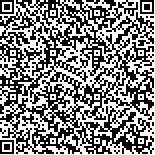下载中心
优秀审稿专家
优秀论文
相关链接
摘要

在山地复杂地形条件下,利用热红外遥感获得的地表温度分布显著受到地形的影响,真实的地热异常信息往往难以识别,热红外遥感应用于山区地热勘探受到极大限制。以广东龙川地热勘查区为研究区,初步探讨了山地环境中如何抑制地形效应,以有效提取地热异常。首先,基于Landsat ETM+遥感数据反演地表温度,分析坡向和坡度两个地形因子与地表温度的关系;然后,在此基础上,将研究区的地表温度按坡向分成3个子区(阳坡、过渡坡和阴坡),根据阳坡地表温度与坡向的线性拟合关系将其校正到水平坡度上;最后,结合地质构造分布和地表覆被情况,在3个子区识别了4处地热异常,并与已知地热点进行比较验证。结果表明:坡向分区和阳坡坡度校正能够有效抑制地形效应,提高遥感地热异常识别精度,为山区地热资源的预测评价提供新思路。
Geothermal exploration in mountain regions strongly relies on the successful identification of thermal anomaly in the regions, which can be performed through the extraction of geothermal anomaly information from thermal infrared remote sensing data. However, changes in Land Surface Temperature (LST) in mountain regions are significantly affected by topography in addition to other factors, such as latitude and surface property. This effect strongly weakens the efficient identification of geothermal anomaly over the LST image retrieved from thermal infrared remote sensing data, which consequently limit the application of remote sensing technique to geothermal resource exploration in mountain regions with rough terrain. This study examines the effects of terrain on LST changes in the mountain region of Longchuan in Southern China to establish an efficient approach, which can correct the effects of terrain on the LST changes for the geothermal exploration in the region.LST was retrieved using mono-window algorithm based on Landsat ETM+ remote sensing data. The effects of terrain on LST distribution were then analysed. The statistical analysis showed a parabolic relationship between LST and aspect. Moreover, the southeast-facing slope had the highest average LST and standard deviation, where LST was significantly and positively correlated with slope gradient. To reduce the impact of terrain on LST distribution, the area was divided into sunny slope, shady slope and transitional slope. The LST in the sunny slope was particularly corrected to its horizontal surface equivalent by the linear regression equation between LST and slope gradient. Geothermal anomalies were then extracted from the LST of these three subareas, with the consideration of geologic structure and land cover.Results showed that the spatial variation amplitude of LST evidently decreased because the significant temperature difference among different terrain conditions has become small in subareas. Four possible geothermal anomalies were recognised in which high temperature areas were closely related to faults and showed little variability in land cover. Comparative analysis with known hot springs indicated that they were likely caused by geothermal activities.In conclusion, topography mainly affects LST spatial distribution by controlling incoming solar radiation. The solution of aspect-based partition and gradient correction presented in this article can also effectively reduce topographic effects. It helps improve the recognition accuracy of geothermal anomalies with remote sensing technology. The solution may also provide an enlightening insight into the forecast evaluation of geothermal resources in mountain regions. Moreover, further analyses of the relationship between LST and other factors controlled by terrain are necessary in future research, especially the physical properties of underlying surfaces, such as land use, soil moisture and vegetation.

